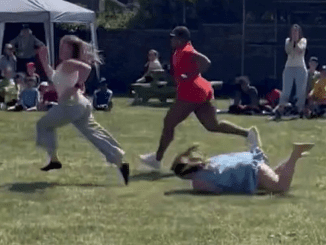Puzzles have a unique way of captivating our minds. Whether it’s a visual riddle or a logic problem, they push us to think critically and spot connections that may not be immediately obvious. Today, we’re tackling a pattern-based puzzle that revolves around shapes and numbers. Your task? Figure out the rule that links the shapes to the numbers and solve the missing number for the final shape.
Let’s break down the puzzle step by step, avoid common pitfalls, and reveal the answer. Ready? Let’s get started.

Common Mistakes People Make in This Puzzle
When faced with a puzzle like this, it’s easy to jump to conclusions based on surface details. One frequent mistake is focusing too much on the visual design of the shapes—things like their color, size, or appearance—without paying attention to the actual components that make up the shapes. People often assume that a striking feature, like a bold color, is the key to the solution, when in fact, the real answer lies in something subtler.
Another common error is being impatient. Many puzzle solvers rush to an answer, assuming they’ve spotted the pattern without fully analyzing each part of the puzzle. In puzzles like this, it’s crucial to slow down, take your time, and inspect every detail carefully. Sometimes, the solution is hiding in plain sight but requires patience and a keen eye.
Step-by-Step Guide to Solving the Puzzle
To solve this puzzle, we need to understand how the shapes are connected to the numbers. The pattern in question involves shapes made up of smaller squares, some of which are filled (non-white) and some that are blank (white). Your goal is to discover the relationship between the filled and blank squares and how that relationship produces the associated number.
Let’s walk through each shape and see what we can uncover:
- Shape 1 has a number 18.
- Shape 2 has a number 20.
- Shape 3 is missing its number, and that’s what we need to find.
To solve this, we need to look closely at how the white and non-white squares within each shape relate to the number given. By multiplying these squares, we can uncover the hidden rule.
Analyzing the Shapes to Find the Answer
Let’s take each shape one by one and apply this method:
- Shape 1: This shape consists of 6 white squares and 3 non-white squares.
- If you multiply these, you get: 6 × 3 = 18.
- This confirms the number 18 for Shape 1.
- Shape 2: This shape contains 5 white squares and 4 non-white squares.
- Multiply these together: 5 × 4 = 20.
- This confirms the number 20 for Shape 2.
- Shape 3: Now, for the final shape, we have 7 white squares and 2 non-white squares.
- Multiply these: 7 × 2 = 14.
- So, the missing number for Shape 3 is 14.
What’s the Answer?
The rule for this puzzle is simple yet clever: multiply the number of white squares by the number of non-white squares to get the corresponding number. By applying this rule to the third shape, we arrive at the missing number, which is 14.
The Importance of Patience and Attention to Detail
As you can see, puzzles like this rely on patience and attention to detail. It’s easy to get caught up in the visual aspects of the shapes or to assume the answer without fully analyzing the components. But by breaking the problem down step by step and focusing on the details, we were able to uncover the hidden pattern.
This puzzle teaches us an important lesson: sometimes, the simplest rule can be the hardest to spot. In this case, the relationship between the white and non-white squares provided the key, but only after taking the time to carefully count and analyze each shape.
Conclusion: Keep Challenging Your Brain
So, there you have it—the missing number in the puzzle is 14, and the rule is to multiply the white squares by the non-white squares in each shape. Did you manage to solve it on your own, or did this guide help you see the pattern more clearly?
Puzzles like this remind us that sometimes the answer is right in front of us, but we need to approach it with a patient and detailed mindset. Whether you nailed it or got tripped up by one of the common mistakes, the important thing is to keep challenging your brain.
Solving puzzles is a great way to stay mentally sharp, so why not try another one? Who knows—your next puzzle-solving session might reveal even more hidden patterns and clever tricks. Keep exploring, and never stop sharpening your mind!


